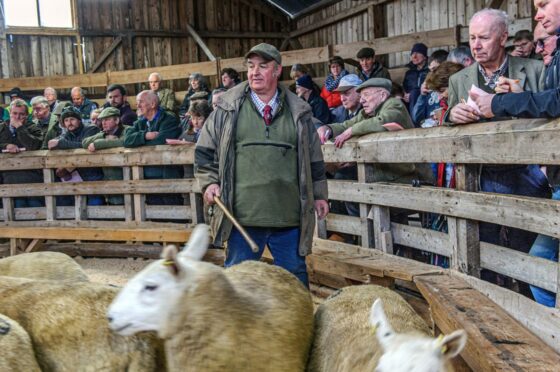A well-known North Country Cheviot enthusiast from Sutherland is about to kick off his 45th lambing season this year.
Hughie Mackenzie, who manages the Badanloch flock on Badanloch Estate, near Kinbrace, is a familiar face at local shows and sales including the famous Lairg sales in the autumn.
During his career, 60-year-old Hughie, estimates that he has produced more than 40,000 lambs, having worked with the breed all of his life.
The flock, which has bred a number of five-figure sales and show winners in the north circuit, is home to 1,000 ewes which are due to lamb from early April onwards.
“I always look forward to lambing but I must admit, once I get started, I look forward to it ending too,” said Hughie.
Hughie started his working career in his home county of Caithness as a shepherd with the Ousdale flock.
He was there for three and a half years before moving on to the Clebrig flock in Sutherland, where he stayed for 25 years.
He has been running the Badanloch flock for the past 16 years now.
“I was brought up with North Country Cheviots,” he said.
“I never really knew anything else. When I was young, there was pretty much no other sheep breed up here. That suited me as I’ve always enjoyed working with them.
“They are full of character and the ewes make great mothers and make a good job of their lambs. They’re very protective.”
Hughie added that while the sheep hadn’t changed much over his 60 years, the way they are run certainly had.
“When feed blocks came, that was a great advantage for hill sheep,” he said.
“The biggest difference of all is when we started scanning the ewes. We could get the twins off and we could feed them early on. It was a big help.
“Vitamin doses, boluses and tic treatments have all made a big difference as well. Previously, we used to have to dip the lambs in a barrel, but the tic treatments and dips are much better now and that’s much better for the sheep.”
The North Country Cheviot breed includes two distinct types – the hill type and the park type.
The hill type was developed for its thriftiness and health meaning it thrives in the poorest upland and mountain conditions, while the park type is larger, heavier and more suited to grassy hills and uplands.
“The breed is getting very popular now,” he said. “Whatever you’re selling, it’s worth money. Whether it is prime lambs, draft ewes, feeding ewes, crosses, the Cheviot Mule or crossed with a Texel. You can cross it with anything and you’ll get good lambs.”

